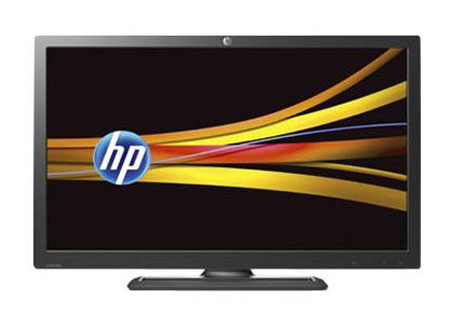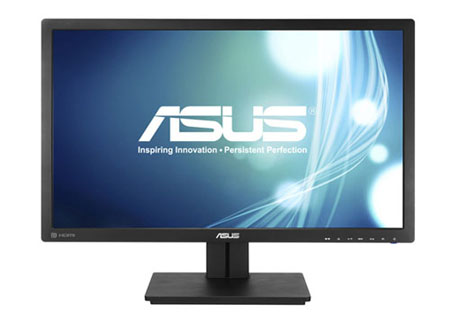HP ZR2740w Versus Asus PB278Q: QHD 27" Monitors, Tested
Until cutting-edge UHD (3840\00d72160) displays hit the mainstream, most enthusiasts have to be content with QHD monitors at 2560x1440 pixels. In the lab today, we have two more 27-inch QHD screens: the ZR2740w from HP and the PB278Q from Asus.
Similar Products For Different Markets
It seems as though prices on these high-res monitors are starting to creep downward. Aside from the significantly cheaper Auria EQ276W, the Asus and HP monitors in this review are less expensive than much of the competition, which was still solidly over $700 at the time of this writing.
Despite its lack of calibration controls, the HP ZR2740w displays solid color accuracy and superb contrast. Regardless of the content you choose to display, the HP delivers excellent contrast and natural color. And there is more than enough brightness available, enough to turn this panel up to a searing level. In fact, it’s the brightest screen we’ve ever measured. Its only real limitation is input resolution. The HP will only accept 1440p, 720p, or 480p. If you play games at resolutions other than those, there is no workaround. Obviously, gaming at 1440p requires some extra power in the graphics card department as well. Consider that carefully before buying this monitor. However, if you do have the juice to handle it, your games will look great. It’s not the speediest panel we’ve tested, but the majority of players will be satisfied with the ZR2740w’s performance.
The Asus PB278Q is the polar opposite insofar as adjustments, providing more than we’ve ever seen in a computer monitor. The high and low white balance controls are quite unique, as are the color and tint sliders (which we’ve never seen outside of a television set). Calibrated performance is superb, right up there with the best. Out-of-box performance, however, is slightly behind other panels we’ve tested. If you have access to the equipment, we strongly recommend having this monitor calibrated. Of course, we recommend this for any monitor that sits on your desk. Your eyes will thank you in the long run. The Asus also offers plenty of available brightness and decent contrast, no matter what the ambient light level. Like the HP, color is also very accurate and natural. We’d have no trouble living with either screen on our desks.
No matter which panel you choose, you can expect a high-contrast image with excellent color accuracy and sharp detail. Both screens are well-built and should stand up to long-term use. Their installation flexibility is excellent thanks to well-designed bases and VESA mount compatibility. Both are styled simply and functionally, and should blend into any environment, whether it be oriented towards productivity or entertainment. While they still command a price premium over 1080p monitors, the gap is slowly narrowing. With UHD (Ultra HD, 4K, or 2160p) just around the corner, QHD represents the highest pixel count that you can put on your desktop right now.
Get Tom's Hardware's best news and in-depth reviews, straight to your inbox.
Current page: Similar Products For Different Markets
Prev Page Results: Pixel Response And Input Lag
Christian Eberle is a Contributing Editor for Tom's Hardware US. He's a veteran reviewer of A/V equipment, specializing in monitors. Christian began his obsession with tech when he built his first PC in 1991, a 286 running DOS 3.0 at a blazing 12MHz. In 2006, he undertook training from the Imaging Science Foundation in video calibration and testing and thus started a passion for precise imaging that persists to this day. He is also a professional musician with a degree from the New England Conservatory as a classical bassoonist which he used to good effect as a performer with the West Point Army Band from 1987 to 2013. He enjoys watching movies and listening to high-end audio in his custom-built home theater and can be seen riding trails near his home on a race-ready ICE VTX recumbent trike. Christian enjoys the endless summer in Florida where he lives with his wife and Chihuahua and plays with orchestras around the state.
-
KOKing I've had one of these HPs at work for a couple of months (replacing an early 24" 1920x1200 IPS), which I've set fairly low), but as this review says, it's not really necessary. I was a little disappointed that, possibly because of the aspect ratio change to 16:9, it doesn't _feel_ like a lot more screen real estate.Reply -
SIDDHARTH MISHRA Useless review, the uniformity on these screens is pathetic, tried three of each, the color temp difference across the screen is over 1000K. Toms has very poor reviewers, only prad.de and overclockers.ru do reliable screen reviews. And btw the U2713HM is regularly on sale for $500 or so, the ZR2740W is now an overpriced relic lacking even an OSD.Reply -
cangelini SIDDHARTH MISHRAUseless review, the uniformity on these screens is pathetic, tried three of each, the color temp difference across the screen is over 1000K. Toms has very poor reviewers, only prad.de and overclockers.ru do reliable screen reviews. And btw the U2713HM is regularly on sale for $500 or so, the ZR2740W is now an overpriced relic lacking even an OSD.Screen uniformity is covered on page eight, and low points on both screens are discussed.Reply -
flong777 Am I right by saying that the Asus monitor has more accurate color and better grayscale performance.Reply -
Marcus52 Surprised that the Asus has slightly better lag results, as one of the reasons for not having an OSD is to reduce lag, and it can make a big difference. Of course, how you measure lag can get different results, and I've seen much lower numbers for the ZR2740w:Reply
http://www.tftcentral.co.uk/reviews/hp_zr2740w_v2.htm
tftcentral is showing the HP as having far less lag than the Asus panel. -
ceberle The Asus certainly calibrates better than the HP; mainly because it can be calibrated. The HP is slightly better out of the box for grayscale and its chromaticity is also a touch better. Both screens have identical color to the eye. Only the instruments can tell the difference.Reply
Christian -
ceberle Regarding the lag results: It's hard to compare numbers from one review to another when the testing methods are so different. With our high-speed camera procedure, the only fair comparison is between the monitors we've tested. I would defend our response test as definitive though. Actually watching the screen draw in slow motion leaves no room for interpretation. The lag test is also consistent since we use the same signal chain for every screen. There is never a change in video cards, drivers, peripherals or any other device that might affect the result.Reply
Christian -
dgingeri I have the HP ZR2740w, and have for over a year now. It's a great looking monitor, and it performas well by my standards, but suffers from a significant lack of both reliability and support. HP's support is massively fragmented. It took me over three hours on the phone to get to the department that actually handled the support for this monitor. (It is a "Commercial" monitor, not business or personal. It's splitting hairs mighty thin, but that's the way HP's support is separated out.) When I finally got through, they sent a tech with a replacement monitor the next day. However, it also has two major hardware issues that render it useless when they occur. Most of the first run monitors had the power supplies die within months. The second run monitors had a serious issue with the control boards. All of them have issues with the USB hub, but it least the monitor keeps working if you don't have the USB cable plugged in. As an owner of one, I would not, under any circumstances, recommend this monitor to anyone.Reply
HP: the perfect example of a company falling apart because it is both too big and too fragmented.

